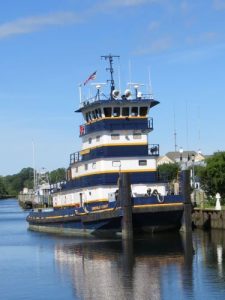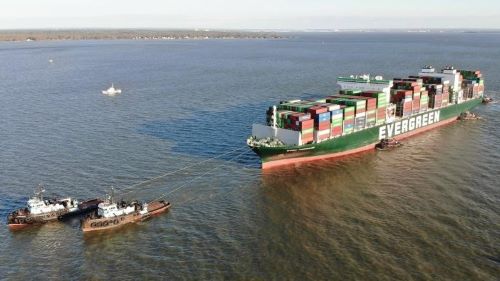
Tugboats are a common sight on the Chesapeake Bay. They transport freight and equipment throughout the watershed from the C&D Canal to Hampton Roads.
Tugboats began appearing on the Chesapeake Bay during of the age of sail. Early steam-powered tugs were used primarily to assist schooners, barges, and other commercial vessels.
Modern tugs range from small push boats to large ocean-going models equipped with heavy steel hulls, mega-horsepower engines, computer navigation, and sophisticated controls.
Tugboats assist container ships and other large vessels with entry, docking, and exiting. In Baltimore and Hampton Roads, skilled tugboat crews move some of the world’s largest ships.
Tugboats provide power to transport a variety of commodities including grain, aggregates, petroleum, and other products. Tugs also tow equipment and assist in at-sea operations such as dredging, construction, and marine salvage.
In the open waters of the Chesapeake Bay the most common tugboat configuration is pulling although some conditions call for pushing or other maneuvers.

In March 2022, tugboats from the Chesapeake Bay and surrounding areas received international attention when a container ship ran aground near Gibson Island south of Baltimore Maryland.
The Ever Forward was finally refloated on Sunday April 16th, following a 35-day-long salvage operation that began Sunday, March 13.
Refloating the Ever Forward required extensive coordination of responders, including dredging and push and pull tugboat operations.
In March 2024, tugboats were among the first vessels to respond when the Francis Scott Key Bridge in Baltimore was struck by the container ship DALI and collapsed into the Patapsco River. The accident resulted in a near-complete shutdown of Baltimore Harbor.
Related Information